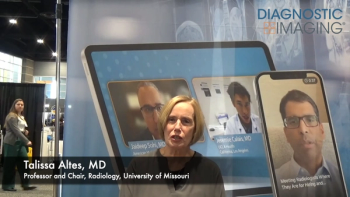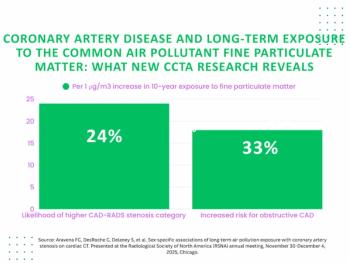
Diagnostic Imaging's Weekly Scan: Jan. 22, 2021
COVID-19 Vaccine Adenopathies Mimic Breast Malignancies; Appendicitis, CT Exposure and Increased Cancer Risk; and MRI AI Tool for Prostate Cancer Recurrence Prediction
Welcome to Diagnostic Imaging’s Weekly Scan. I’m senior editor, Whitney Palmer.
Before we get to our featured interview this week with Dr. Katerina Dodelzon from Weill Cornell Medicine about COVID-19-vaccine related adenopathies that can mimic breast malignancies on imaging, here are the top stories of the week.
As more and more people get vaccinated for COVID-19, investigators from Weill Cornell have cautioned radiologists about a common side effect of vaccination – swollen lymph nodes. Based on their experience with four women in their institution – these adenopathies are showing up on breast imaging and can mimic breast malignancies. In fact, adenopathies can appear within two-to-four days in 11.6 percent of patients after one dose and 16 percent after two. The presentation on ultrasound and mammography has been the same for both the Moderna and Pfizer-BioNTech vaccines. In their study published in
More evidence emerged this week in the debate over whether radiation exposure from CT scans can increase the likelihood of cancer. In a study published in
For more coverage based on industry expert insights and research, subscribe to the Diagnostic Imaging e-Newsletter
For prostate cancer, one of the most critical steps is being able to accurately identify which men will suffer a recurrence. According to a group from Case Western Reserve University, achieving that goal could get much easier thanks to their artificial intelligence tool,
And, finally, this week, as mentioned earlier, anecdotal reports were published this week about COVID-19 vaccine-related adenopathies that can mimic malignant breast abnormalities. For the details of the study, Diagnostic Imaging spoke with Dr. Katerina Dodelzon, assistant professor of radiology at Weill Cornell Medicine. Dodelzon, who is also a board-certified breast imager, discussed the findings of her team’s experience with the four women included in the study and what it means for radiologists, both in breast imaging and other sub-specialties. Here’s what she had to say.
Newsletter
Stay at the forefront of radiology with the Diagnostic Imaging newsletter, delivering the latest news, clinical insights, and imaging advancements for today’s radiologists.




























